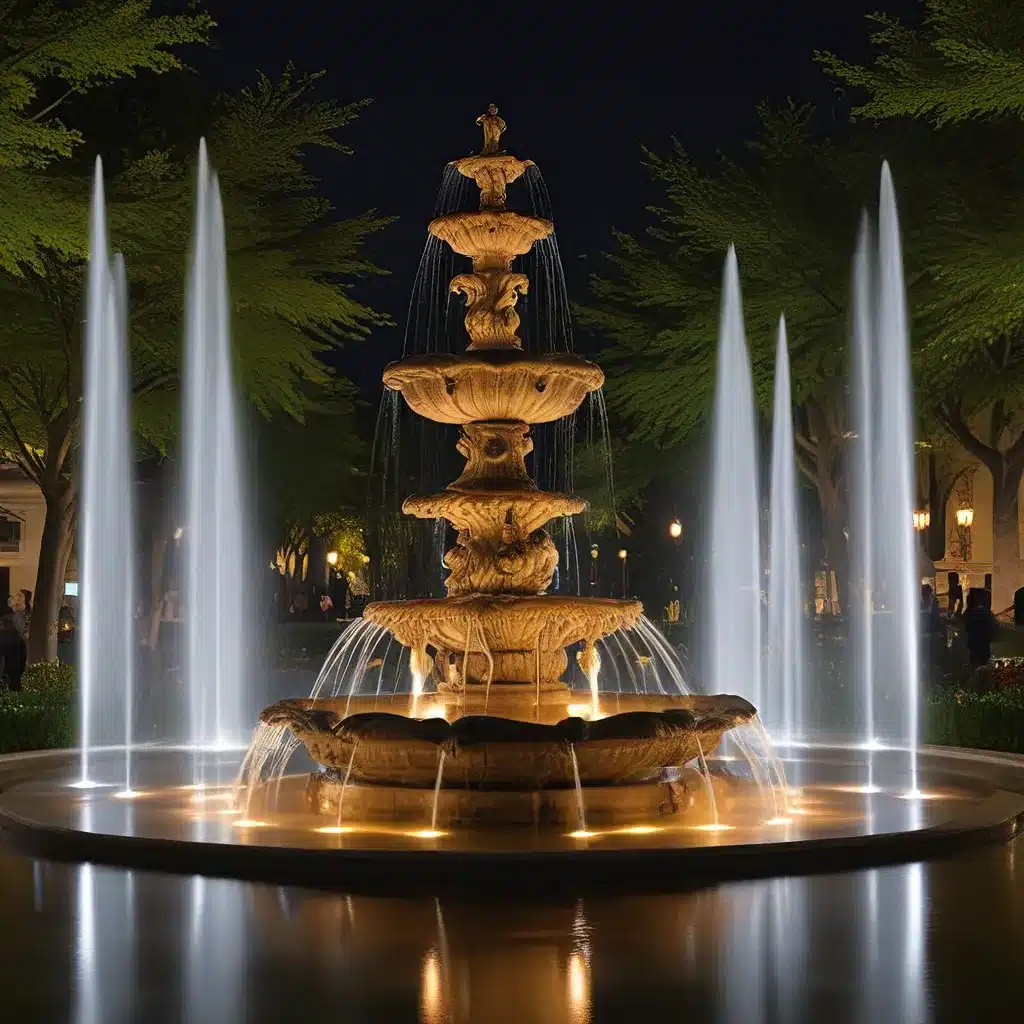
Fountain Design Essentials – Welcome to Fountain Lights
Menu
Fountain Design Essentials – Welcome to Fountain Lights

I’ve always wondered what makes the perfect fountain pump. Well, after extensive research and analysis, I’ve discovered the key factors that determine its ideal qualities. From the size and type of fountain to the flow rate requirements, energy efficiency, durability, longevity, noise level, and maintenance, there’s a lot to consider. In this article, I will delve into the technical aspects and provide you with precise information to help you choose the perfect fountain pump for your needs.
When choosing the ideal fountain pump, considering the size and type of fountain is crucial. The installation process and cost analysis are important factors to keep in mind when making this decision. The size of the fountain determines the power and flow rate needed for the pump. A larger fountain will require a pump with a higher flow rate to ensure proper circulation and a visually pleasing display. On the other hand, a smaller fountain may only require a pump with a lower flow rate. Additionally, the type of fountain, whether it is a standalone or a pond fountain, will also impact the choice of pump. The installation process and cost analysis should be carefully evaluated to determine the most suitable pump for the specific fountain.
To determine the ideal fountain pump, I need to consider the flow rate requirements. The flow rate is the amount of water that the pump can move in a given time. It is crucial to choose a pump with the right flow rate to ensure proper water circulation in the fountain. The flow rate requirements depend on factors such as the size of the fountain, the desired water effect, and the pump power. The pump power determines the water pressure that the pump can generate. Higher pump power usually results in higher water pressure and therefore a higher flow rate. It is essential to match the flow rate requirements of the fountain with the capabilities of the pump to achieve optimal performance.
| Factor | Description |
|---|---|
| Size of the Fountain | The size of the fountain determines the amount of water needed for proper circulation. Larger fountains may require higher flow rates to maintain a consistent water flow. |
| Desired Water Effect | Different water effects, such as streams or cascades, require different flow rates. A gentle trickle will require a lower flow rate, while a dramatic waterfall effect will need a higher flow rate. |
| Pump Power | The power of the pump determines the water pressure it can generate. Higher pump power can provide a higher flow rate. It is essential to match the pump power with the flow rate requirements of the fountain to ensure proper water circulation and achieve the desired effect. |
Considering these factors and finding the right balance between pump power and water pressure will help determine the ideal flow rate requirements for the fountain pump.
An important factor to consider when determining the ideal fountain pump is its energy efficiency. Energy efficiency refers to the ability of the pump to convert electrical energy into the desired water flow with minimal energy wastage. It directly affects the cost effectiveness of the pump and its environmental impact. A highly energy efficient fountain pump consumes less electricity, resulting in lower energy bills and reduced carbon emissions. By choosing a pump with high energy efficiency, you can save money in the long run and contribute to a greener environment. It is recommended to look for pumps that have an Energy Star rating or meet the guidelines set by organizations such as the Environmental Protection Agency (EPA) to ensure optimal energy efficiency and minimal environmental impact.
As I continue our discussion on the ideal fountain pump, a crucial aspect to consider is the pump’s durability and longevity. When investing in a fountain pump, it is essential to choose one that is built to last. A durable pump not only ensures long-term functionality but also proves to be cost-effective in the long run. By opting for a pump with a longer lifespan, you can save on replacement costs and maintenance expenses. Additionally, a durable fountain pump adds to the aesthetic appeal of your fountain, as it remains in good condition for an extended period. Therefore, it is important to carefully evaluate the materials used in the pump’s construction and opt for one that guarantees longevity and resilience.
Moving on to the next aspect of the ideal fountain pump, let’s now delve into the noise level and maintenance requirements. When considering the noise level, it is crucial to select a fountain pump that operates quietly. This ensures a peaceful and enjoyable environment, especially in areas where tranquility is essential, such as gardens or meditation spaces. Additionally, a pump with low noise levels minimizes disturbances for both humans and wildlife. Maintenance is another vital factor to consider. The ideal fountain pump should have minimal maintenance requirements, saving time and effort for the users. Regular maintenance tasks may include cleaning the pump and checking for any blockages or debris that could affect water pressure and flow. Aesthetics should also be taken into account, as a well-maintained pump enhances the overall visual appeal of the fountain.
Share to :
Subscribe to our newsletter for the latest in fountain design, innovative lighting ideas, and exclusive tips straight to your inbox. Join the community shaping the future of water features.

Rapid delivery to your doorstep.

Excellence in every product.

Great value for your investment.

Assistance at any hour.
Fountain Lights — Illuminating creativity in every splash!
Copyright © 2023. All Right Reserved